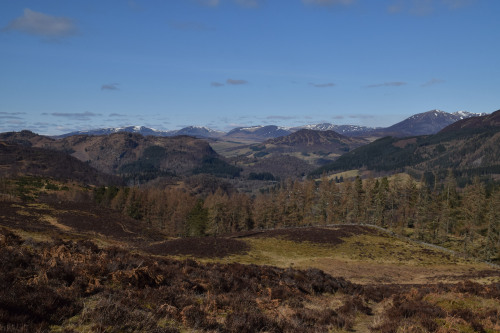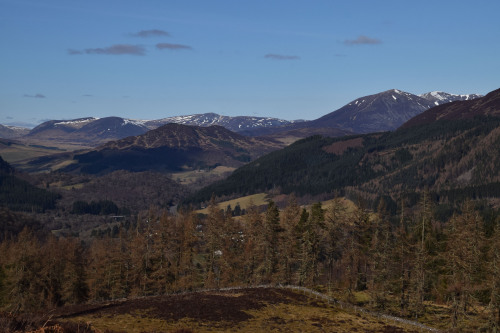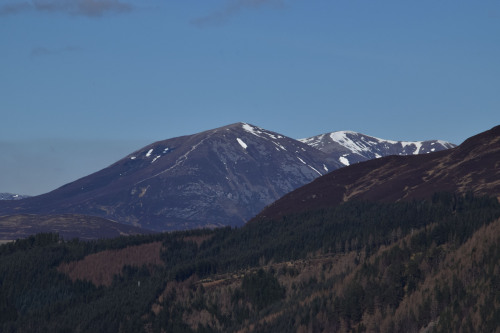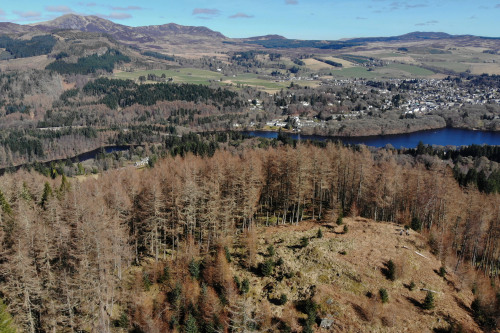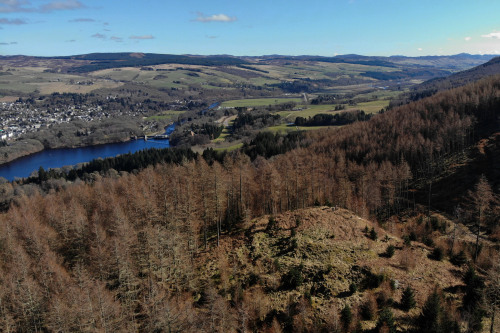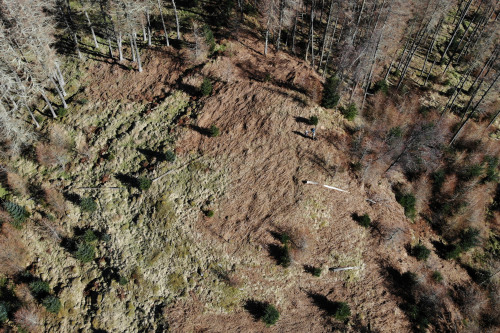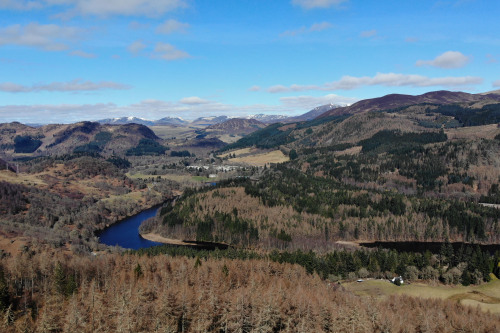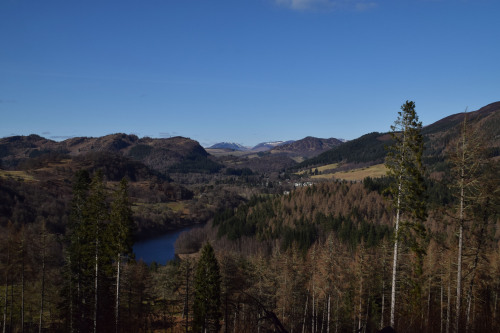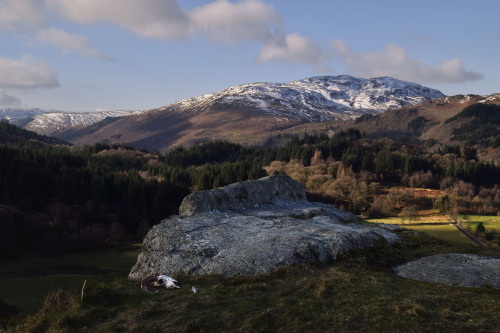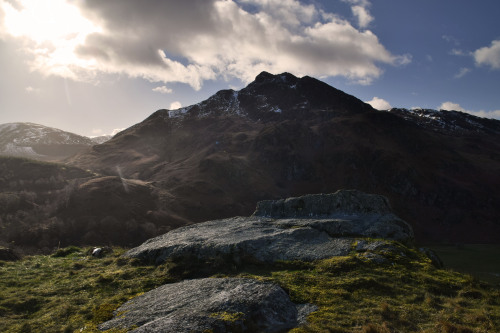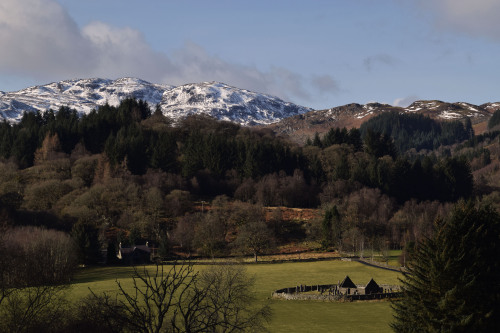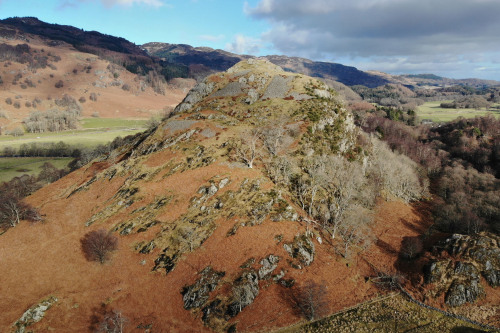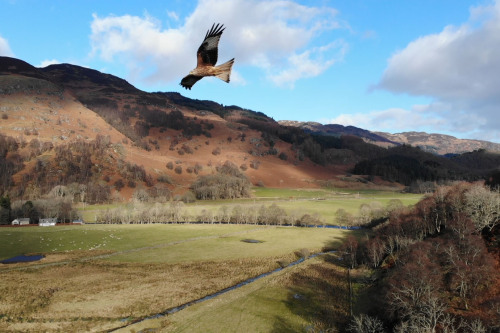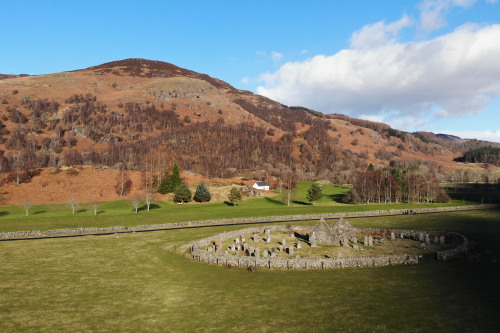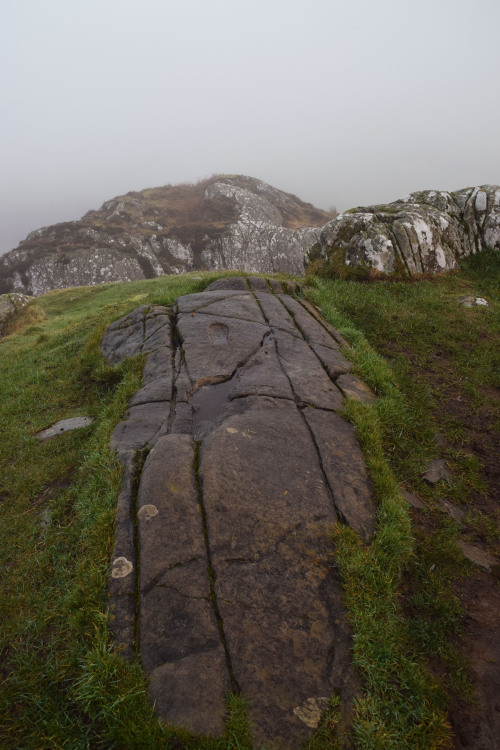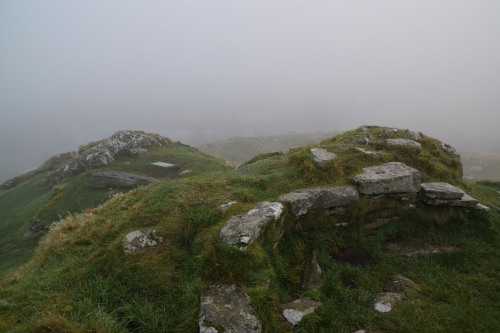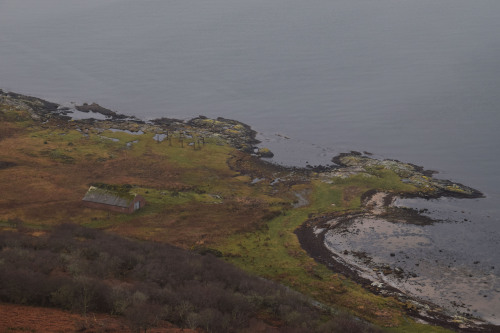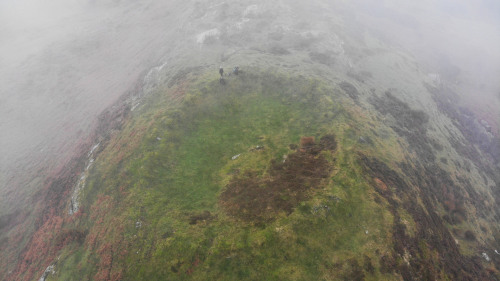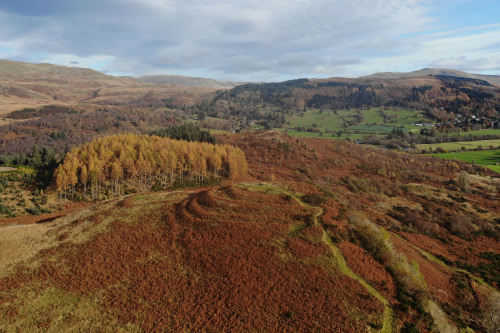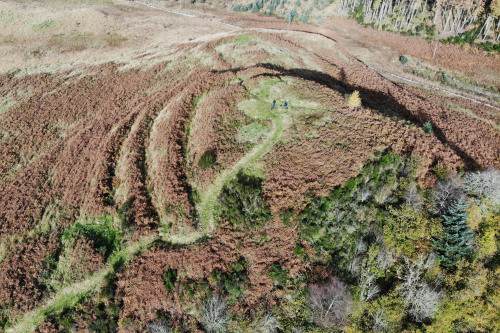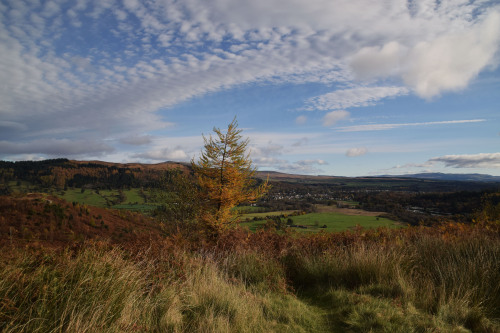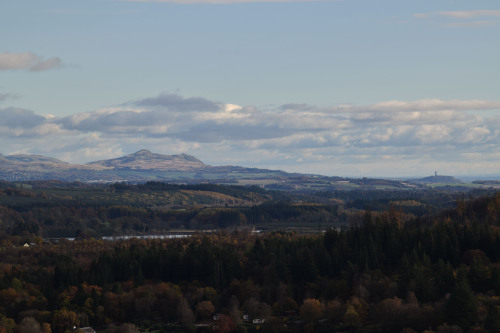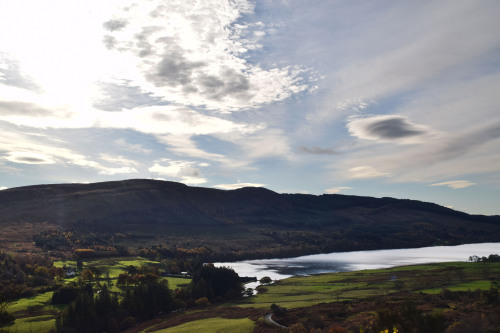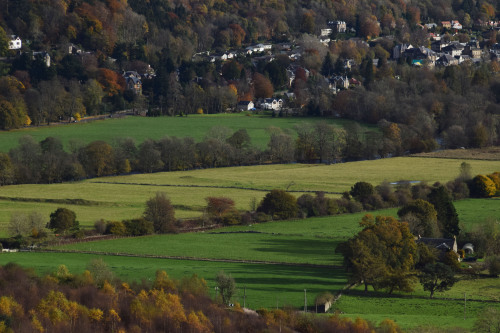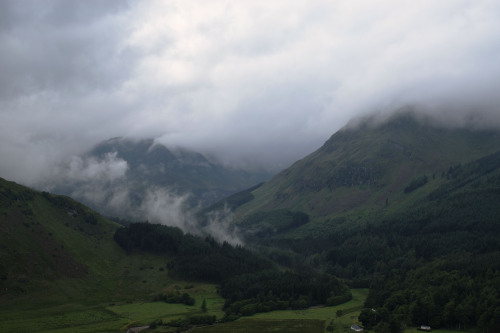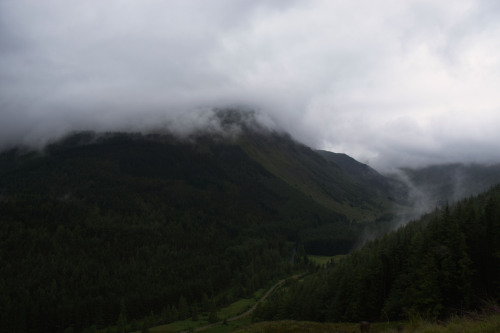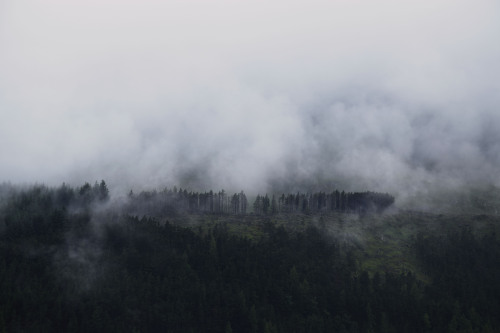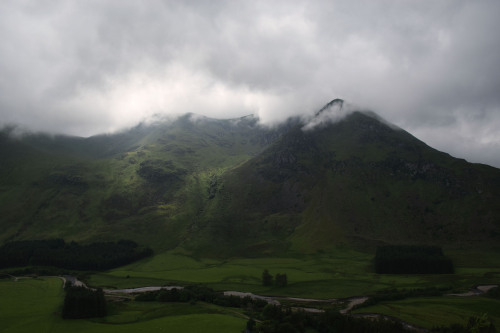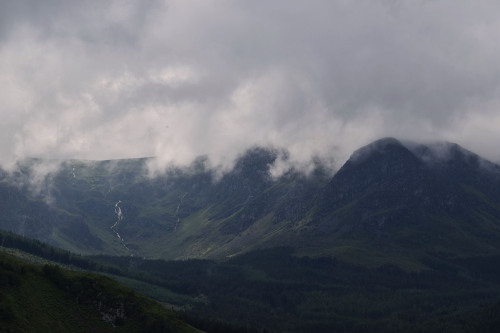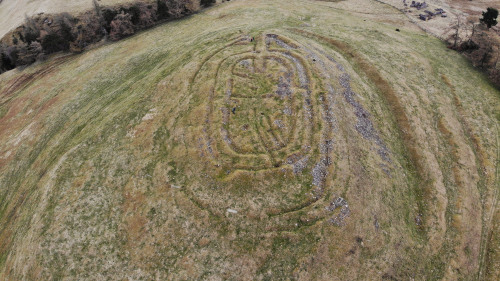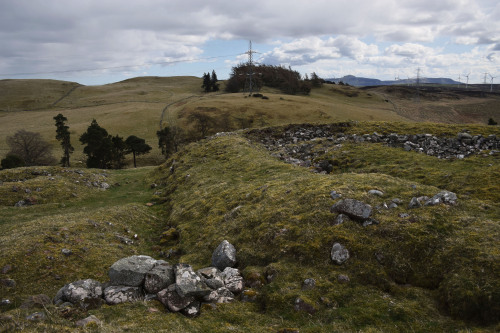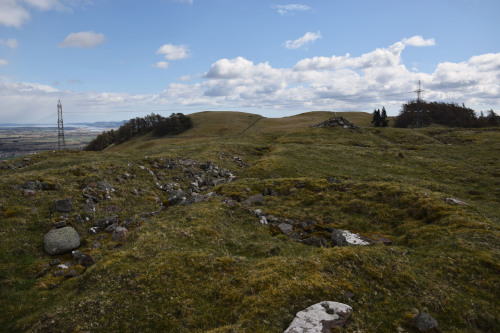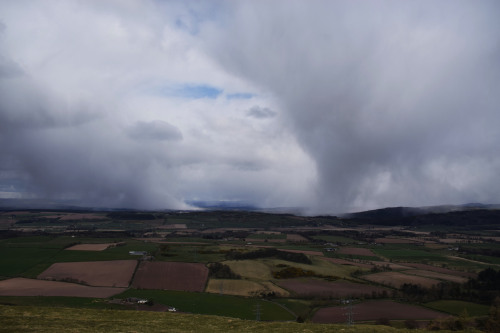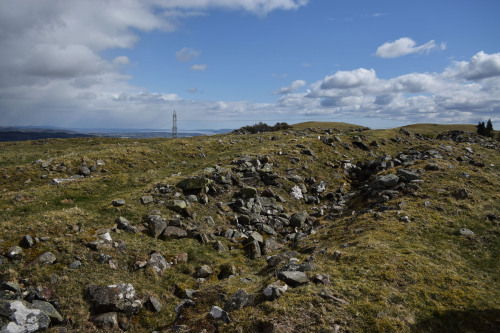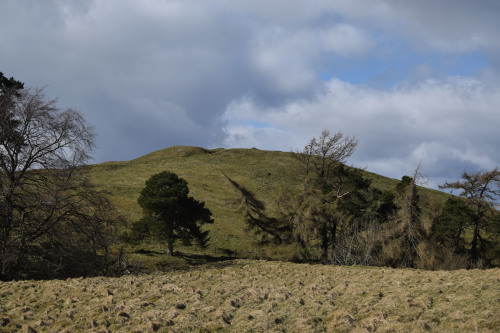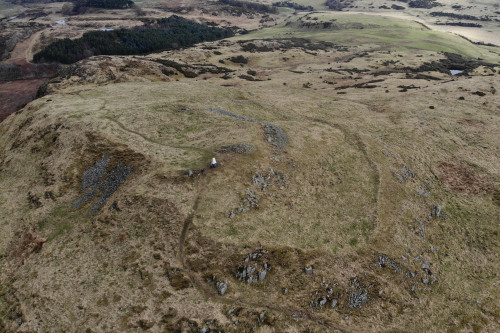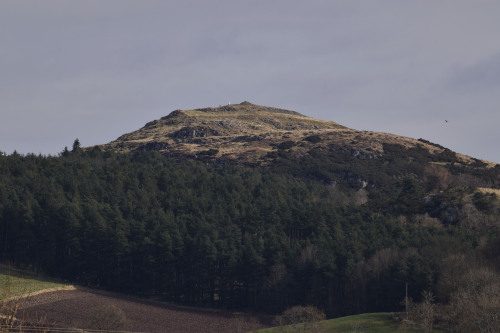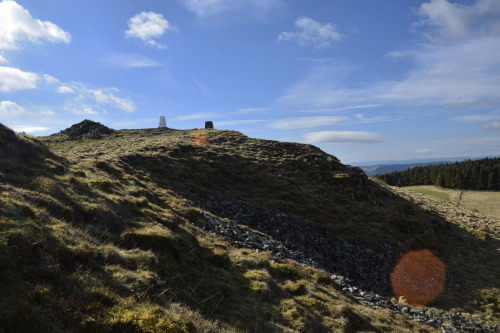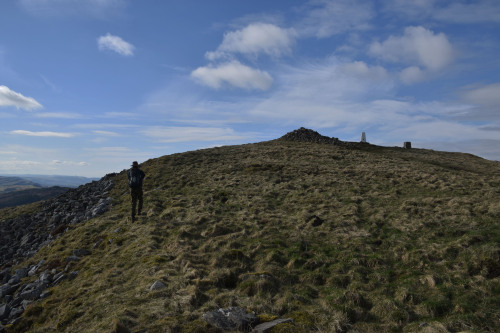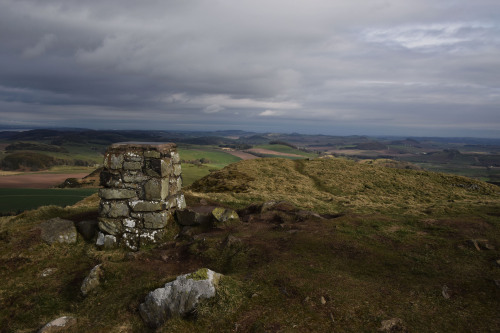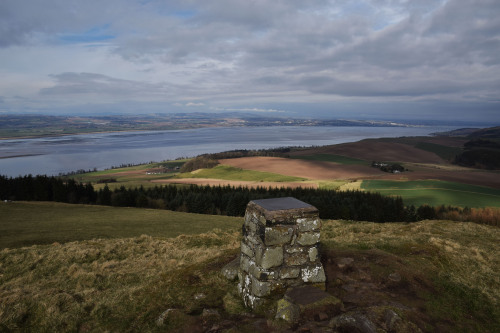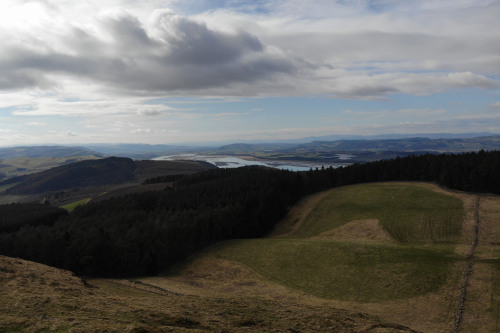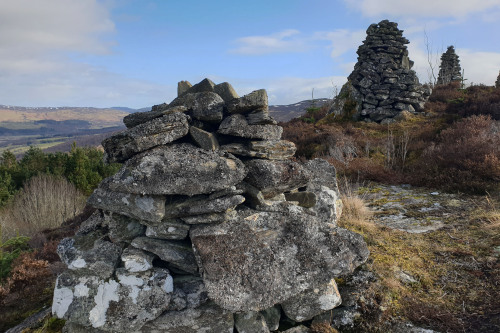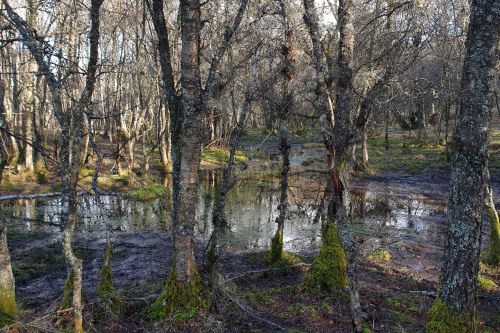#hillfort
Thank you so much, @hexawen for sharing this beautiful photo of you wearing our backpatch! The site in the photo is the fantastic Grianán Ailigh hillfort, in the Inishowen peninsula, County Donegal. It’s great to see where our prints go, especially when they happen to be in the same places we loved and visited.
Artwork by Sean Fitzgerald.
You can get one in our shop: https://www.etsy.com/shop/LimbsDisarm?ref=l2-shopheader-name
Post link

Lady Aileen Fox down a trench (and holding a ranging rod and a trowel) in Exeter in the 1960s with an assistant. Copyright Royal Albert Memorial Museum & Art Gallery, Exeter. Use here with their kind permission.
Aileen Fox (née Henderson), born in 1907, had a privileged childhood of nannies and home tutoring, and she was never expected to go to university. Her mother only allowed her to take the entrance exams for Cambridge on the proviso that she would be presented at Buckingham Palace, which she duly was in 1926.
She started out as an assistant at the excavations of the important Roman fort at Richborough in Kent, potentially the first landing of the invading Romans. This was a very early example of a salvage or rescue dig, spurred on by the destruction of WWII. At that time workmen did most of the digging and assistants cleaned and catalogued the finds. She picked up the work very quickly and soon became indispensable. On her second season she ended up setting up a museum.
She worked under Dorothy Liddell (another TrowelBlazer who deserves recognition!) and with the future Mary Leakey on two digs in 1933, Hembury Hillfort in Devon, and Meon Hill Iron Age settlement in Hampshire. She learned to do her own digging, surveying and sampling there. That autumn she married the widowed archaeologist Cyril Fox, director of the National Museum of Wales. She kept busy helping him excavate and survey local sites while she had her family, but it was on his retirement that she really got going.
After being invited to direct excavations in bomb-damaged Exeter immediately after the Second World War, she taught at what would become Exeter University from 1948 to 1973. The prehistory of the south-west was sadly neglected and she set out to change that, spending many seasons digging and eventually writing the first proper synthesis of the archaeology of the area.
Aileen organised a one-year visiting lectureship at Auckland University in New Zealand. She ended up staying for ten years doing various jobs at the university and museum, rejuvenating the investigation of many Maori pa -hill forts- and helping set up the New Zealand Archaeological Association. It was a fitting end to an adventurous career.
Model Of Maori Pa On Headland - Wikipedia
Written by Kim Biddulph
Edited byBrenna
Read More:
Fox, A 2000. Aileen - A Pioneering Archaeologist. The Autobiography of Aileen Fox. Gracewing: Leominster.
Lady Fox’s Obituary in the Guardian.
Archaeopedia New Zealand’s Aileen Fox entry
An Dun Hillfort, Pitlochry, Scotland
This hillfort (‘an dun’ just means 'the fort’) is surrounded by trees nowadays and might well be near impossible to spot from the road, but back when it was used it must have had a majestic view across to the Cairngorms. Today you can also see the bright Blue of Loch Faskally and the River Tummel, as well as the town of Pitlochry stretching across the hills. You get a great view of the Pass of Killiecrankie, a natural separation line between this area and the depth of the Scottish Highlands beyond. No wonder this is considered the Northernmost hillfort in Perthshire. This hillfort is not well known these days, so we really enjoyed exploring it in depth. On the way back we went up further into the hills and were rewarded with an amazing view of the Cairngorms sprawled across the horizon. Beinn a'Ghlo was especially prominent and reminded me of the time we tried to go up, but found ourselves in a cloud that wasn’t budging. The River Tummel provided an accent of intense blue. Up on the hills, we could only see it with the drone, but as we descended back towards Pitlochry on the circular walk, the view towards the river opened up, which you can see in the last photo.
My visit to An Dun features in my March Vlog.
Post link
Dundurn Hillfort and St Fillans Chapel
I love coming back to this hillfort because the scenery here is just so breath-taking with the mountains rising up on all sides. The dusting of snow on the tops made it even more scenic. Feral goats roam this area (likely descendants of those abandoned during the Highland Clearances) and funnily enough, there was one at the top keeping an eye on us while indulging in some of the spring greens. There is a graveyard nearby with a ruined chapel dedicated to Saint Fillans. While I was surveying Dundurn with a drone, one of the Red Kites (I’m sure I saw at least two) came to have a closer inspection of this very strange and noisy new bird in the sky. Quite a few birds have checked out the drone so far, but luckily none of them ever tried to attack it. I’m sure they can tell that it’s not a bird. It must be such a strange sight to them.
Head over to my February Vlog to see a visit and drone footage of this fort.
Post link
Dunadd Hillfort, Argyll
This hillfort is pretty impressive as it is, but it also has a special slab with a footprint. This slab is one of the reasons why people visit Dunadd Hillfort. It is associated with the Kings of the Scots tribe Dal Riata and their inauguration ceremony, which according to legend involved the new King stepping into the ‘footstep’ of his predecessors. What you see nowadays is a cast though, so you don’t have to be worried about wearing down something of historical importance. It’s still a fun thing to step into that foot shape. I did it and it was precisely the size of my boot. As with the previous day of our holiday, there was a firm grasp of fog and low cloud and particularly early in the morning when we were there, the landscape around the fort was simply non-existent. We still got a pretty good idea. There is an upper level with a citadel at the top and the King’s stone slightly below. And there is a lower level with remains of buildings, a wall and a well. There’s a natural (or not) break in the rock, which leads in and out of the lower level. A perfect bottleneck for defending the fort. There’s parking right next to the fort and it’s only 5 to 10 min to get up there. So visiting Dunadd is a no-brainer when in Argyll.
Head over to Youtube for a video of me visiting this fort and other places in Argyll.
Post link
Dun Skeig Hillfort and Coast of Argyll
This hillfort has a great location to watch over the sea and you can see as far as Jura on a good day (while we were there there was a persistent low cloud). Certainly, the Isle of Gigha is looming on the horizon in my photos. Before roads were built along the coast and into the Highlands, it was much faster and easier to travel around by boat (and probably still is), and many settlers came over from Ireland. Those people were known as the ‘Scots’ and they ended up giving their name to Scotland eventually. Their presence can be felt all over Argyll. This hillfort, though, is particularly interesting, not just because it’s well preserved, but because it’s somewhat unusual in that there is two of them. There is an older fort, which is ‘vitrified’, meaning the stone has molten, potentially from a fire that may have destroyed the fort. The only remains of the old fort are grass-covered walls. A new fort was built on the other side of the hill peak, re-using some of the vitrified stone. Much of the wall is still standing and especially once you get up into the air, you can truly appreciate this structure.
My Argyll Holiday Vlog is up on my channel.
Post link
Dunmore Pictish Hillfort, Callander
This easily-accessible Iron Age-style hillfort is located in the Trossachs, which is quickly becoming one of my favourite parts of Scotland. The big mountain behind the fort is called Ben Ledi and according to a legend, giants held a rock throwing competition on its peak. The giant Samson won the competition by flinging a massive rock, which still lies on Bochastle Hill, the hill right next to the hillfort. It is known as ‘Samson’s Stone’ (photo 8). The hillfort itself has distinctive defensive walls and a little annexe, perhaps for keeping animals safe. You get a great view towards the Lowlands from here. You can see Stirling Castle and the Wallace Monument, but you can even see as far as the Pentland Hills next to Edinburgh. When you look towards Callander, you can also spot some old boundaries in a field (photo 9). These are the walls of Bochastle Roman Fort, one of the smaller forts situated at the entrance to important glens. That means the Pictish fort and the Roman fort were close by and were in sight of each other, perhaps indicating a precarious relationship between the locals and an incoming military force, a delicate balance between war and peace.
You can find a full tour of Dunmore Hillfort and Bochastle Roman Fort on my Youtube channel.
Post link
Glen Clova and Glen Doll, Scottish Highlands
We drove up to the Cairngorms to visit Dun Mor Hillfort and Corrie Fee. It was raining lightly on our way up and we were worried that it wouldn’t be much of a walk. But right when we arrived at the top of the hillfort the rain eased off and left behind these stunning clouds, that kept on shape-shifting around the mountains. I was able to take some beautiful and scenic drone footage for my video. As we made our way down, the heaviest of the clouds had dissipated and revealed Corrie Fee and it’s magnificent waterfall, which was our other destination that day.
Post link
Join in as we drive through Glen Clova, go up to have a look at Dun Mor Hillfort (and get a spectacular view from there) and then take the forest path up to Corrie Fee, a high-up valley shaped by glaciers a long time ago. I brought my drone for some scenic footage. I hope you enjoy!
Castle Law, Forgandenny
This Iron Age-style hillfort has been excavated in Victorian times and since then the walls at the top have been exposed, creating this fascinating pattern. From the ground all we could see was parallel lines, but from the air this hillfort truly comes to life. It is a timber-laced hillfort, just like the nearby Castlelaw near Abernethy, a technique which originated in Switzerland according to some archaeologists and may reflect an influx of incomers to the British Isles from the continent. There’s a full hillfort tour up on my channel.
Post link
We visited two Iron Age hillforts near Newburgh, Fife: Norman’s Law, un-excavated, but well-preserved in its features; and Glenduckie Hill, excavated, but overgrown with plants that conceal its features. They couldn’t be any more different. We discuss the appearance and history of the hillforts in this video. I also used a drone to get a bird’s eye perspective. So come and explore these hillforts with us!
Norman’s Law
This is a well-preserved Iron Age hillfort, which was so much fun to explore. There is a total of 3 walls, each becoming larger in diameter. So this must have been a large and important fort at one point in time. The top and innermost part of the hillfort still has ample remains of the 3 to 4 meters-thick wall that once protected it. This fort is close to Newburgh in Fife and lies along the Fife Coastal Path. For the most part, Fife can be associated with the Pictish tribe of the Venicones, the most likely candidates to have inhabited this fort. From the top you get a great view towards the River Tay and the Scottish Highlands in the North. It’s very likely that on the other side of the river the tribal territory of the Caledonians began. To the North-East you can see Dundee, which coils around Dundee Law, another ancient hillfort.
A full hillfort tour is up on my channel!
Post link
At the beginning of February we had 3 days of snowfall, which accumulated into at least 1 foot of snow. We struggled to get around with our car, but everything looked magical for a whole while. Then in the middle of February the weather turned mild and the snow started melting. Due to the high level of snow and the fast melt there was more flooding than usual and the River Tay next to the City of Perth, where we live, grew to over twice its size. I also show you the floodgates, which protect Perth, which historically has been flooded multiple times. Enjoy!
Also here is a little side by side comparison of snow vs flood:


Castle Dow, Pictish Hillfort
All of the snow, except for the mountain tops, has melted and Spring has begun. It’s always nice to walk through an old forest up to the top of this hillfort and see these cairns, which have been built during the Victorian era. Rather than following the path, we followed an old wall, which we knew would lead us straight to the top. The forest is a bog at this time of the year, but this is the most fun I had in while. I felt invigorated. Forest bathing is a real thing with real effects on the body, psyche and soul.
Post link


